
Google AdWords is one of the most popular forms of digital advertising on the Internet. Not only does it span across millions of searches performed every day, but the ads are also displayed on websites across the world.
AdWords even influences advertisements delivered on YouTube.
You can see why this system is so prolific for engaging consumers.
AdWords is a relatively simple application to use, but you can lose a lot of money if you don’t advertise efficiently. Many have dumped a lot of cash into the system with little results simply because they didn’t optimize their ads.
In this article, I’m going to show you how to maximize the tool’s efficiency while getting more bang for your buck. It’s all about spending less to get more visitors and sales.
Setting Up Your Account
The first thing you’ll need is an AdWords account. Luckily, you may already have access to this if you have a Google profile for anything. For instance, you can simply sign in to AdWords if you already use Analytics.
Go to the Google AdWords website and click, “Sign In.” If you don’t have a Google account, you really should create one. There are a lot of tools the company provides that will optimize business growth and interaction.
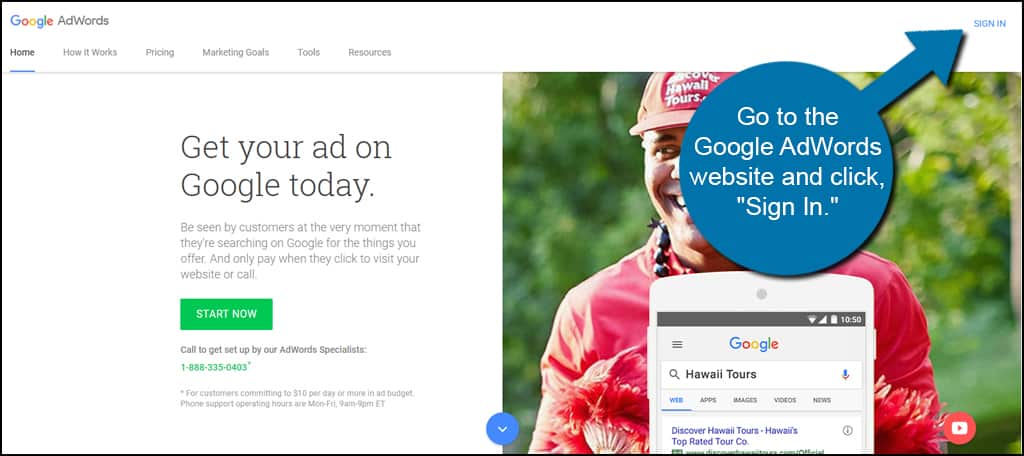
Before you get started, you need to understand your target consumer.
What keywords are attracting people to shop? Do they have a buying cycle? Who is it you’re trying to engage? All of these are important questions that need to be answered before you start spending money on keyword bids.
Bidding on a keyword is when you place a certain dollar amount on a specific word to engage your consumers. The higher the bid, the more often it is shared throughout Google’s advertising system.
If you choose poorly, some keywords will result in excessive spending by you and not enough shopping by customers.
1. Understanding Your Demographic
The first thing you should look at is your customer’s demographics. Analyze who it is who is more interested in purchasing your goods. This is vital because AdWords lets you fine tune your ads to those specific markets.
Some experts like using Alexa. This is a website which analyzes Internet traffic to a specific URL. However, it’s not always the most accurate.
If you’re just starting out with an eCommerce website, it’s likely your site will not even be available on Alexa’s system.
Perhaps a better tool to use for identifying demographics is using Google Analytics. The downside to this system is that it, too is misleading sometimes. This is because Analytics records many forms of bots and spamming as easily as it does organic visitors.
However, it’s still a worthwhile system to use for determining customer interest and has a variety of useful reports.
After all, Analytics is still one of the most efficient visitor tracking systems on the Internet.
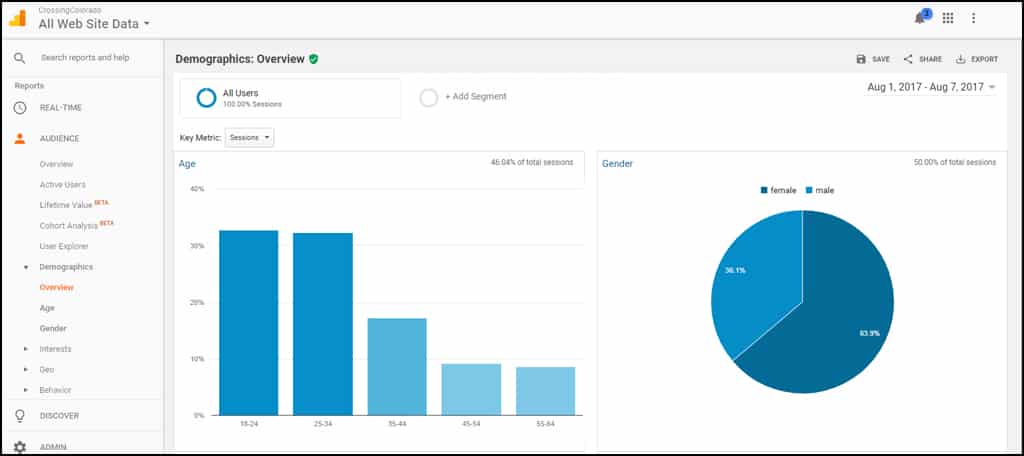
Knowing the demographics of your audience is only part of the equation. You also need to know their buying habits.
For example, you wouldn’t sell summer and beach attire during the fall…unless it was on clearance.
Certain items and industries go through peaks and valleys throughout the year. It’s important to identify these moments as it will help you save a lot of money in AdWord expenses.
Like the saying goes, “Strike while the iron is hot.” In other words, push your ads when you know they’ll be effective.
2. Monitoring Competitors
There’s nothing wrong with taking a look at how the other companies are driving sales.
In fact, it’s important that you do. Keeping a close eye on how competitors are marketing their goods helps you create strategies to surpass their efforts.
A great tool to use for competitor research is SpyFu.com. All you need to do is input the competitor’s URL and SpyFu will break down everything you’ll need to determine a good AdWord strategy.
It shows both paid and organic search keywords from top competitors.
SpyFu also breaks down backlinks, top keyword trends over time, ads used by the competitor and delivers recommendations based on what others are bidding on. It has a lot of functionality as a free system, but it goes even deeper if you pay for a premium service.
The data available may be worth the effort of using even a basic account.
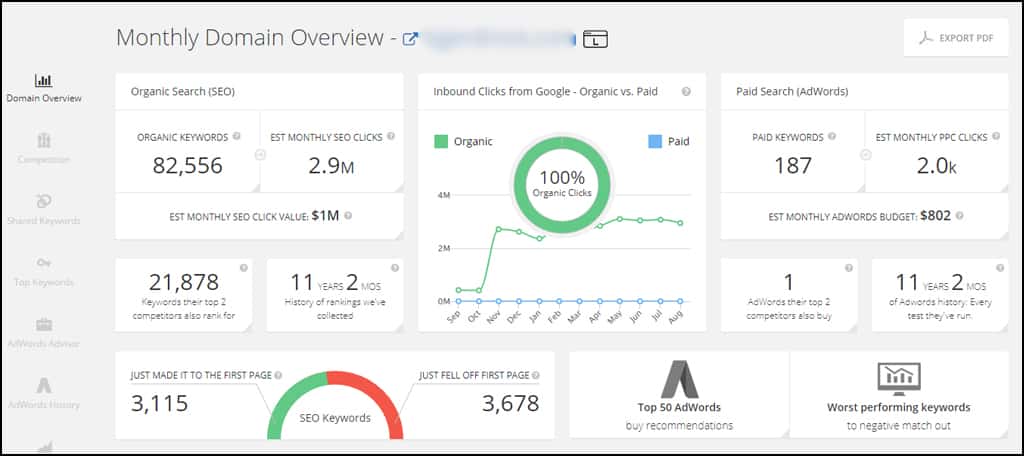
3. Developing a Good Unique Selling Proposition
A unique selling point, or USP, is something that sets your company apart from the others. It’s often referred to as something your company stands for. Sometimes this means focusing on a specific specialty.
For example, Microsoft was known back in the day as an operating system developer. That was back before the company diversified itself.
What’s the one thing that your business offers that is completely unique? If you can answer this in one or two words, you have a base for developing a good keyword strategy in AdWords.
One part of AdWords that many people use extensively is the “Keyword Planner” tool. By taking your USP and feeding it into the system and then clicking “Get Ideas,” you can see how people are looking for products or services.
Finding the Right Keywords
For the sake of argument, let’s say you’re focusing on a “health food” aspect for the business. Click on Tools from the top nav bar and click, “Keyword Planner.”
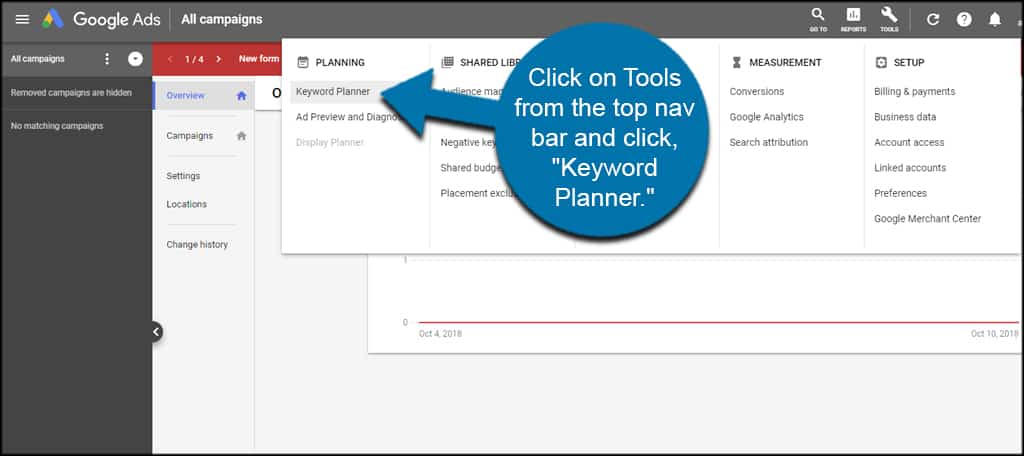
You have two methods to search: find new keywords and search volumes and forecast. At the moment, let’s just click, “Find new keywords.”
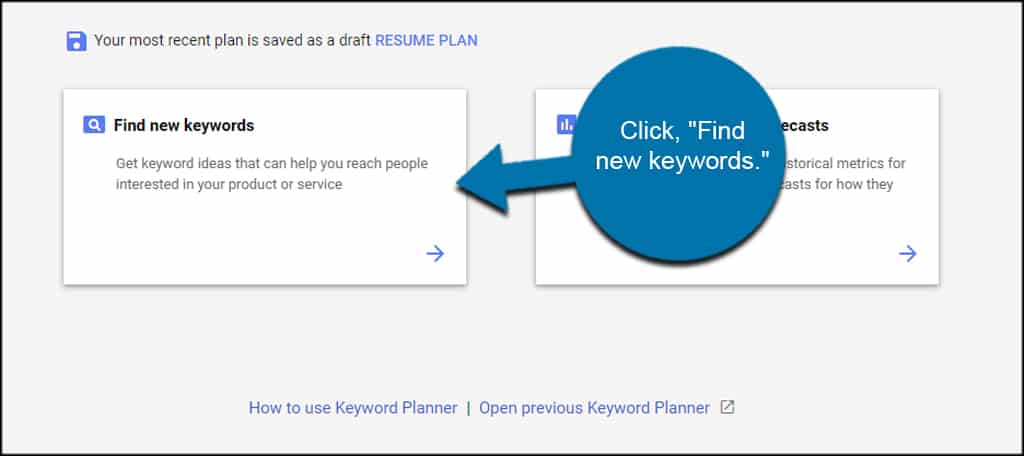
Put the phrase “health food” into Keyword Planner and click “Get Started.” We will also change the product category to “Nutrition & Dieting,” which is the area we would want to focus on.
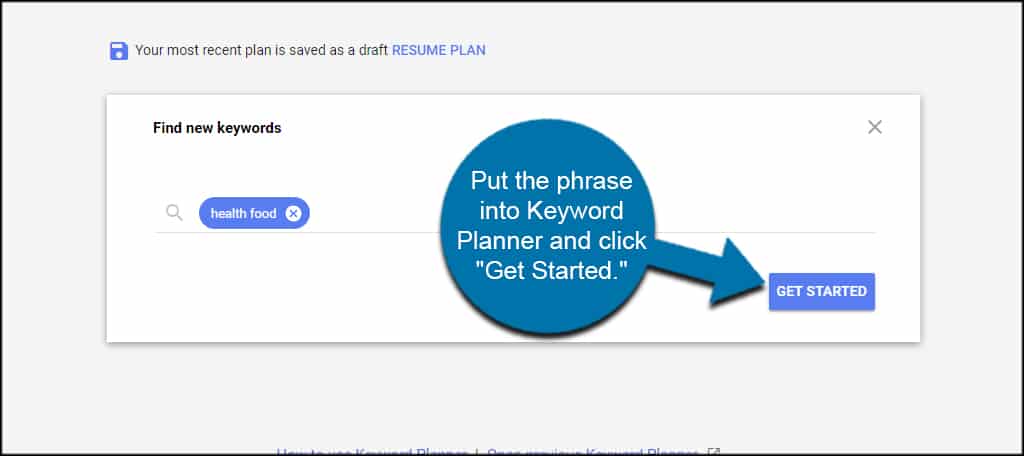
AdWords will then analyze all words and phrases relevant to the term. It will also show the average monthly searches, competition levels and suggested bid.
Words and phrases that have a lower competition rate are more likely to be seen by the average visitor. However, this doesn’t mean you’ll instantly make a sale.
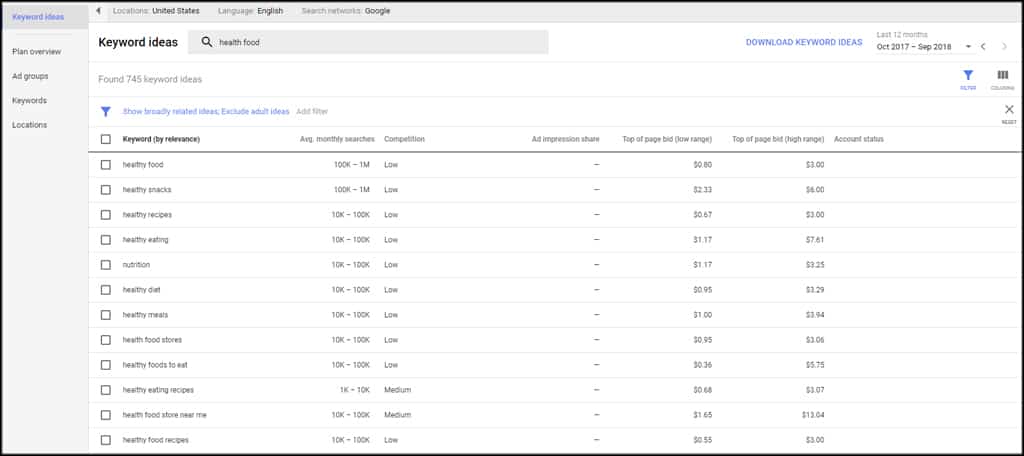
This list of phrases demonstrates how visitors are engaging content in Google.
Defining How Your Business Solves a Problem
Creating a prominent USP relies on being able to answer customer questions in a clear and concise manner. Your focus needs to provide a solution to people who are looking up those terms you found in the Keyword Planner.
Using the same example as earlier, we can see that “Weight Loss” is the number one searched keyword relevant to “health food.” This means using “weight loss” as a focal point, we can market the health food to those who are looking to lose weight.
As long as your landing page clearly defines how your product helps lose weight, there is a good chance for making a sale.
Optimize USP Use in the Ads
Try to include the USP into your headline and text if possible. Don’t try to force it as you want the advertisement to be easy to read. However, you want the target consumer to understand completely what it is you’re offering.
In a way, it’s much like developing meta descriptions for webpages. You’re trying to convey what the user can expect by visiting. You won’t have a lot of space, so the text or image needs to deliver a point as quickly as possible.
4. Build a Landing Page that Converts Visitors into Buyers
The landing page is perhaps one of the most important parts of using Google AdWords. You can have an amazing advertisement that draws in the traffic only to be foiled by a poorly designed entry page.
Try not to use the homepage of your site as the landing page unless you’re simply looking for visitor exposure. You want to focus your ads on a specific product or service that is highlighted.
For example, what if we sold energy bars from our health food sample site? We would create a landing page specifically for that one product.
Some experts will use free offers or giveaways on the landing page simply to draw in the consumer. This works exceptionally well because a lot of shoppers relish in the idea of getting something for nothing.
However, this all depends on what your ultimate goals are and the purpose behind the advertisement in the first place.
Regardless of your strategies, the landing page is where the action is going to be. It’s the whole purpose of developing an ad in the first place, and it needs to be developed in a way that is more likely to convert.
And don’t underestimate the value of a social media landing page as well. After all, some of your guests will find your site through posts and updates on sites like Twitter and Facebook.
5. Putting the Ads Together
Now that you have a good USP strategy and landing page, it’s time to start putting it all together.
Perhaps the most important part of your Google ad is the headline. It is the most prominently displayed as it is in bold and the first thing consumers will read.
In reality, it works much the same way as a webpage title in search results. The headline needs to be immediately engaging.
Several things you can do to an ad to engage the consumer include:
- Ask a question
- Answer a question
- Offer a guarantee, if applicable
- Include a “free” element
- Keep ads current with dates or events
The more specific you are with your ads, the better they will perform. This is because they are more focused on a certain aspect that consumers may be looking for.
For example, instead of the ad stating: “We sell health food to help you lose weight,” use something more focused like, “100+ weight loss foods available. Free nutritional planner!”
According to the above example, most people may simply come for the nutritional planner.
While they are visiting, there is a greater chance they will also look at what you have for sale. It’s more engaging and less generic, and that’s what you’re looking for in a good AdWords campaign.
Use power words in your descriptions and/or titles. These work the same way as they do when creating titles for website content. It’s all about the verbiage and engaging the audience in as few characters as possible.
Another way to approach your ad copy is to create something clever. People are often more receptive to something relatable to real life than straightforward facts.
For instance, a description like: “Can this blueberry bar help you find your car keys?” is intriguing to some. This is especially true if the landing page follows up with a bit of scientific evidence regarding how blueberries are proven to enhance memory.
6. Monitoring and Optimizing Ads As You Go
Don’t expect your advertisement to be an instant success. Many developers will spend a great deal of time perfecting ads over the following weeks, months and even years.
What I’m saying is that you should always keep a close eye on how your ads perform.
Decide on what kind of delivery system you want to use. When setting up AdWords, you can choose between the search engine or placing your ads across display networks.
These networks include Google Adsense. Some people prefer not to show ads on the websites of others and would rather focus on the search engine giant itself.
It’s common for developers to create a series of experimental ads to determine which is the more efficient. Although this requires a bit more of a budget put into AdWords, the end results are often quite enlightening.
Studying the language used in each ad demonstrates which one is more appealing to your consumer base.
Time of the day, location of the consumer and bidding are parts you can change throughout the campaign to find the “sweet spot” for your ads. In reality, some industries just seem to perform better during certain times of the year or even during regular business hours as opposed to overnight.
You have a ton of data to go through, and it’s worth every moment if you can find the right combination for your advertisements.
Engaging the Consumer
The whole point to creating advertisements is to engage the consumer. A simple ad is less likely to inspire people to make a purchase but more likely to cost you money.
If you want to enhance your return-on-investment rates, you need to optimize your AdWords account. Spend the time studying your consumers and how they interact with ads. It may vastly increase your success over the long-term.
